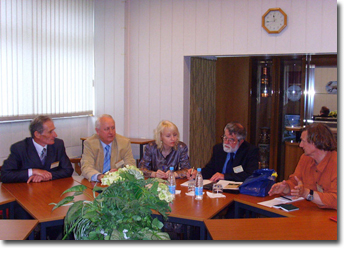
NEW YEAR NEW SICAMM
SICAMM is about to become a federation of European Dark Bee organisations. A team of mellifera enthusiasts has worked hard since september 23 and will be presenting the plans at a Kick-Off Meeting on January 11th '24.
Objectives of SICAMM
Statement
The survival of the native honey bee of northern Europe, Apis mellifera mellifera, L. is now seriously threatened throughout its natural range. SICAMM is an international union of beekeepers, regional and national associations, institutions and other groups that support a set of agreed objectives concerning conservation of this threatened subspecies. SICAMM’s work depends on the efforts and initiatives of such groups and the competence of their individual members. We also encourage governments and scientific and environmental funding bodies to support endeavours to identify and conserve ecotypes and local variants of the north European honey bee. We recognise and stress the legal duty of nations within the original natural range of A.m.mellifera to preserve or establish protection areas for their native honeybees, in accordance with the internationally respected Convention on Biodiversity (1992). We believe this a task of pressing importance to the general conservation of biodiversity, but especially in the preservation of an invaluable genetic resource indispensible for food production for present and future generations.

The President of SICAMM, Dr Dorian Pritchard in discussion with Professor Nikolay Krivtsov, the organiser of the 2008 conference in Moscow and Director, R&D Centre for Apiculture, RAAS. The young lady is his daughter Tatiana, who acted as interpreter. To their left is Professor Nikolay Grankin of Oryol State University and on the far right is Ole Hertz, Danish Bee Consultant and Danish representative to SICAMM.
- SICAMM seeks to promote national and international cooperation between beekeepers, scientists, associations and institutions concerned with conservation of the dark north European honeybee Apis mellifera mellifera, L.
- The central aim of SICAMM is to support th survey, conservation, management and breeding of all extant ecotypes and geographical variants of A. m. mellifera.
- SICAMM aims to inform, educate and influence the general public, national and international scientific, political and public organizations in seeking support for its objectives. It obtains advice from experts, scientific committees and institutions and disseminates relevant technical and scientific information to associated groups, associations and institutions.
- SICAMM aims to gain political and financial support for projects initiated by associated groups, within the frame of its main objectives and the Convention on Biological Diversity, 1992. National or regional campaigns may be initiated by SICAMM in cooperation with local associated groups and national organizations.
- Where appropriate, SICAMM advocates recolonization of areas that have lost their native bees, stressing preference for introduction of variants of the native honey bee that are biologically closest to the original inhabitants of those areas.
All content © SICAMM 2021, all rights reserved | About | Privacy Policy | Legal | Connect